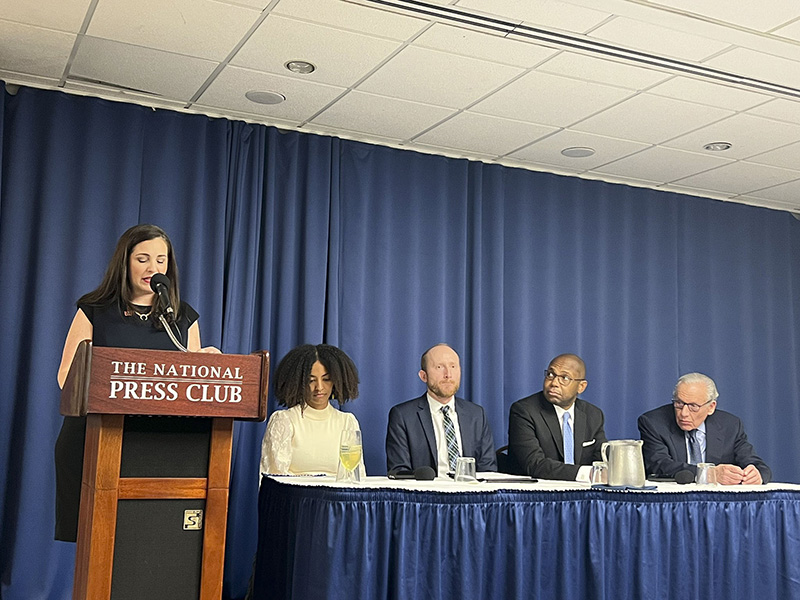Panelists suggest ways to overcome military/civilian divide
Hiring more veterans and writing with more sensitivity about military and veterans affairs could help reduce what panelists described as a “military/civilian divide” at an event hosted at the National Press Club on Veterans Day.
The panel discussion featuring four journalists who are also military veterans marked the launch of the Military & Veterans Affairs Reporting Guide by the professional association Military Veterans in Journalism (MVJ). The guide includes a military cultural competency and style guide, an expert directory, a showcase of veterans in media, and a reporting tips blog.

With less than two percent of journalists identifying as veterans, panelists blamed the lack of representation on the now traditional route of getting into journalism — through journalism schools, internships and fellowships — excluding those who serve in the military.
"There's a normal route where people get into journalism, and veterans just don't meet that standard,” said MVJ executive director Zack Baddorf, a Navy veteran. “They go a different route from that standard route.”
Bob Woodward, Washington Post associate editor and a Navy veteran, called media outlets’ preferences for graduates of journalism schools an example of the “relentless momentum of the status quo.” Some outlets have looked to make it easier for veterans to enter their newsrooms, including the Post, NPR and CNN, but these programs are not the norm, he said.
When writing about veterans and the military, journalists should be careful to avoid stereotypes on certain issues when reporting on them, including post-traumatic stress disorder, or referring to veterans having military training as a catch-all that does not capture the nuance of their careers, said Ron Nixon, investigations editor at the Associated Press and a Marine Corps veteran.
It is incumbent on journalists to avoid “Rambo-ism” where they automatically assume veterans are damaged and ready to lash out when back in civilian life, Nixon said. Instead, he said, journalists should prioritize talking with veterans’ organizations, who can answer questions about various issues and provide the best context. Letting people’s views of veterans be skewed by pop culture is not conducive to good reporting.
"The perception that people get with veterans is basically what they see on TV or in pop culture,” Nixon said. "A lot of the pop culture has to do with the same thing: the damaged vet, the vet who came back home, can't fit in."
Allison Erickson, an Army veteran who is now an editorial fellow at the Texas Tribune, said it has been easier to build trust with current military personnel as she understands the terminology and experiences of the armed forces, as well as the day-to-day life on living on military bases. Baddorf agreed.
"We know the community, we know how to talk to veterans, we know we've gone through it,” Baddorf said. “We have post-traumatic stress, we know the challenges of the [Department of Veterans Affairs], we've been to Afghanistan. We know these communities and we can provide really high-quality, high nuanced reporting in a way that frankly a non-veteran cannot."
